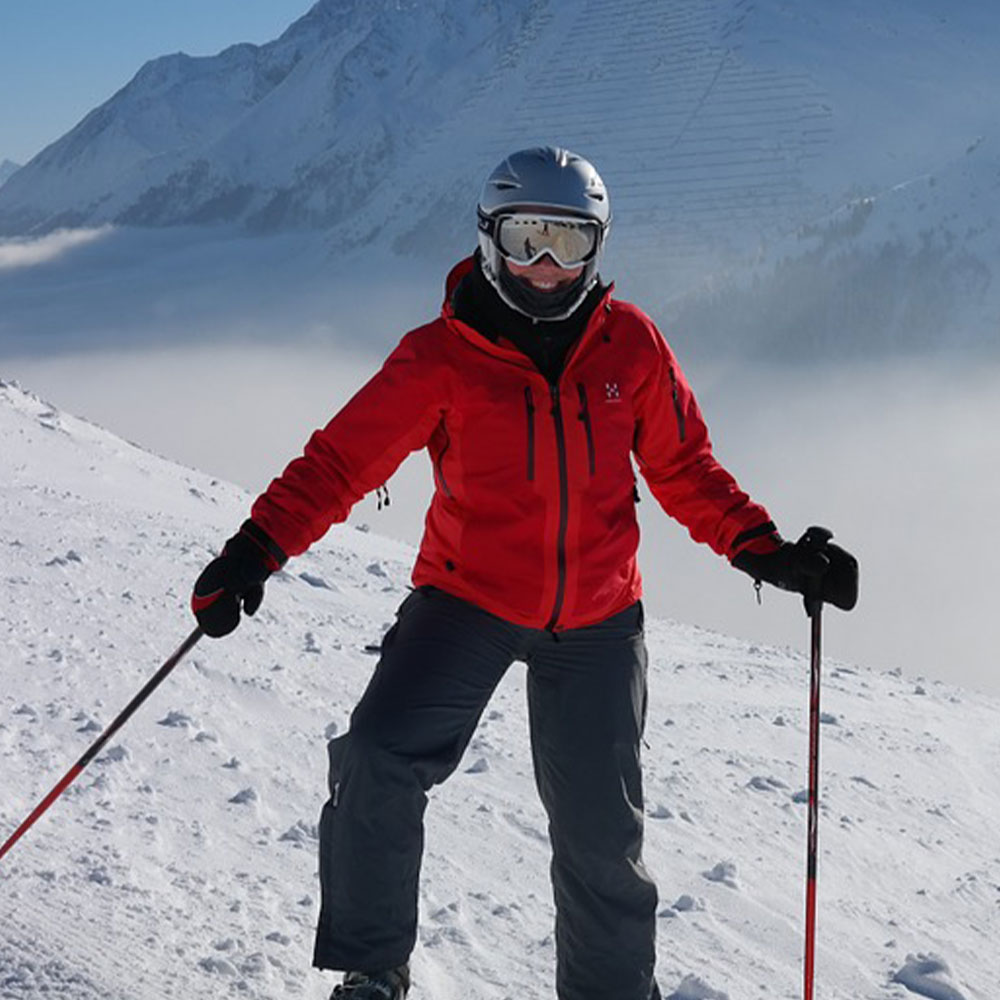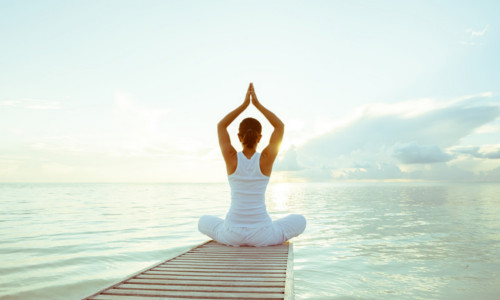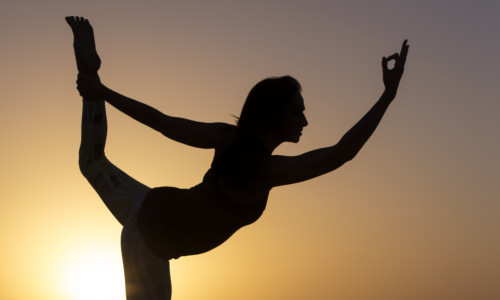Make the Best of Yoga Exercises and Improve Your Well-being
Author

A keen runner, skier and nuts about cycling. Karl lives in Cumbria, where he loves encouraging his two children to follow in his outdoor lifestyle. Whilst out and about keeping active, Karl keeps a diary and shares it with Outdoor Look.
 Yoga is renowned for its therapeutic effects. Besides healing tired spirits, it is also beneficial for the whole body. In spite of all the benefits of yoga, people are put off by its difficult learning curve, and do not make use of this amazing invention of the Hindus.
Yoga is renowned for its therapeutic effects. Besides healing tired spirits, it is also beneficial for the whole body. In spite of all the benefits of yoga, people are put off by its difficult learning curve, and do not make use of this amazing invention of the Hindus.
For all those people who believe that yoga requires a person to be flexible and good at holding a pose for long, I have simple advice: Do what you can, and do your best. Instead of trying difficult poses and failing, it is better to start off with easy exercises. When you have mastered an exercise, it will increase your confidence and you will find it easier to perform a harder exercise.
A few fundamentals essential for a yoga practitioner are:
Breathing: Breathing is the basis of Yoga. Breathing is required to keep a person steady and as you stretch your breath deeper, it has a palliative effect on the mind. If you have access to a beautiful view outside your home, just sitting in the garden, breathing in and out is sure to have a positive effect on your psyche.
Foundational Poses: Just like any discipline, Yoga has its own learning curve that starts with the mastering of a few basic poses. These poses are called asana and form the basis upon which all other advanced yoga exercises are modeled.
Learning the fundamental poses is essential for mastering yoga. Here is a list of three basic yoga poses that I love to perform:
 Tadasana or Standing Mountain Pose
Tadasana or Standing Mountain Pose
Stand with your legs slightly less than hip distance apart. Your feet should be facing forward and need to be parallel. Now, hug your muscles into your midline. Pull the tops of your thighs back and balance that with lengthening your tailbone down towards the floor. Now it’s time to pull your shoulders back while keeping your neck straight. Open the heart, and align the crown of your head directly over the center of your body. This completes the Tadasana.
Virabhadrasana 1 or Warrior 1
You need to be in mountain pose for performing this yoga pose. Step a foot out one stride forward. Now, turn the heel of the opposite foot slightly angled so that it faces the top corner of your mat. Feet should be hip distance apart instead of in line with each other. Bend your front knee 90 degrees so your thigh is parallel with the floor. Depending on your flexibility you might not be able to get the perfect 90-degree angle. In this case focus on your base, feet, and leg position. Extend your arms over your head and make sure to keep both hips squared forward.
Adho Mukha Svanasana or Downward Facing Dog
Get on your hands and knees on the mat with elbows and wrist in line directly under your shoulders. Align the creases of your wrists so that they are parallel with the front edge of your mat. Focus on your hands. Make sure that the hands are firmly planted. Walk your knees back, so that they are slightly behind your hips. Turn your feet under so they are planted firmly on the floor. Your heels may or may not touch; focus on grounding them towards the earth. Lift your knees off the floor and keep them slightly bent. Now, straighten your arms, pulling your shoulder blades together on the center of your back while opening your chest. Lengthen your tailbone towards the ceiling, and press your thighs back and straighten your legs.
Author

A keen runner, skier and nuts about cycling. Karl lives in Cumbria, where he loves encouraging his two children to follow in his outdoor lifestyle. Whilst out and about keeping active, Karl keeps a diary and shares it with Outdoor Look.
Categories
- Sport (28)
- Product Reviews (3)
- Team Outdoor Look (7)
- Mike Wild (2)
- Mike Payton (2)
- Suse Hammond-Pears (3)
- Snowboarding (12)
- Latest Offers (105)
- Shop Talk (1)
- Competitions (7)
- Walking (413)
- Lifestyle Fashion (8)
- Travel (86)
- Kit Guides (176)
- Workwear Clothing (6)
- Safety Workwear (4)
- Health/Fitness (289)
- Skiing (91)
- Great Outdoors (1316)
- Cycling (92)
- January 2025
- December 2024
- November 2024
- October 2024
- September 2024
- August 2024
- July 2024
- June 2024
- May 2024
- April 2024
- March 2024
- February 2024
- January 2024
- December 2023
- November 2023
- October 2023
- September 2023
- August 2023
- July 2023
- June 2023
- May 2023
- April 2023
- March 2023
- February 2023
- January 2023
- December 2022
- November 2022
- October 2022
- September 2022
- August 2022
- July 2022
- June 2022
- May 2022
- April 2022
- March 2022
- February 2022
- January 2022
- December 2021
- November 2021
- October 2021
- September 2021
- August 2021
- July 2021
- June 2021
- May 2021
- April 2021
- March 2021
- February 2021
- January 2021
- December 2020
- November 2020
- October 2020
- September 2020
- August 2020
- July 2020
- June 2020
- May 2020
- April 2020
- March 2020
- February 2020
- January 2020
- December 2019
- November 2019
- October 2019
- September 2019
- August 2019
- July 2019
- June 2019
- May 2019
- April 2019
- March 2019
- February 2019
- January 2019
- December 2018
- November 2018
- October 2018
- September 2018
- August 2018
- July 2018
- June 2018
- May 2018
- April 2018
- March 2018
- February 2018
- January 2018
- December 2017
- November 2017
- October 2017
- September 2017
- August 2017
- July 2017
- June 2017
- May 2017
- April 2017
- March 2017
- February 2017
- January 2017
- December 2016
- November 2016
- October 2016
- September 2016
- August 2016
- July 2016
- June 2016
- May 2016
- April 2016
- March 2016
- February 2016
- January 2016
- December 2015
- November 2015
- October 2015
- September 2015
- August 2015
- July 2015
- June 2015
- May 2015
- April 2015
- March 2015
- February 2015
- January 2015
- December 2014
- November 2014
- October 2014
- September 2014
- August 2014
- July 2014
- June 2014
- May 2014
- April 2014
- March 2014
- February 2014
- January 2014
- December 2013
- November 2013
- October 2013
- September 2013
- August 2013
- July 2013
- June 2013
- May 2013
- April 2013
- March 2013
- February 2013
- January 2013
- December 2012
- November 2012
- October 2012
- September 2012
- August 2012
- July 2012
- June 2012
- May 2012
- April 2012
- March 2012
- February 2012
- January 2012
- December 2011
- November 2011
- October 2011
- September 2011
- August 2011
- May 2010
- April 2010
- March 2010
- February 2010
- January 2010
- November 2009
- October 2009
- September 2009
Submit a Comment